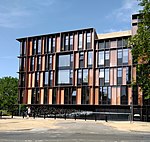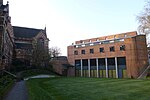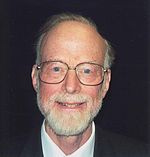Keble College, Oxford

Keble College () is one of the constituent colleges of the University of Oxford in England. Its main buildings are on Parks Road, opposite the University Museum and the University Parks. The college is bordered to the north by Keble Road, to the south by Museum Road, and to the west by Blackhall Road. Keble was established in 1870, having been built as a monument to John Keble, who had been a leading member of the Oxford Movement which sought to stress the Catholic nature of the Church of England. Consequently, the college's original teaching focus was primarily theological, although the college now offers a broad range of subjects, reflecting the diversity of degrees offered across the wider university. In the period after the Second World War, the trends were towards scientific courses (proximity to the university science area east of the University Museum influenced this). As originally constituted, it was for men only and the fellows were mostly bachelors resident in the college. Like many of Oxford's men's colleges, Keble admitted its first mixed-sex cohort in 1979.It remains distinctive for its once-controversial neo-gothic red-brick buildings designed by William Butterfield. The buildings are also notable for breaking from Oxbridge tradition by arranging rooms along corridors rather than around staircases, in order that the scouts could supervise the comings and goings of visitors (Girton College, Cambridge, similarly breaks this tradition). Keble is one of the larger colleges of the University of Oxford, with 460 undergraduates and 525 graduate students in 2021/22. Keble's sister college at the University of Cambridge is Selwyn College.
Excerpt from the Wikipedia article Keble College, Oxford (License: CC BY-SA 3.0, Authors, Images).Keble College, Oxford
Parks Road, Oxford City Centre
Geographical coordinates (GPS) Address External links Nearby Places Show on map
Geographical coordinates (GPS)
| Latitude | Longitude |
|---|---|
| N 51.758899 ° | E -1.257715 ° |
Address
Keble College
Parks Road
OX1 3PG Oxford, City Centre
England, United Kingdom
Open on Google Maps









